Today’s blog on the use of nicknames in the Innerpeffray visitors’ books is inspired by a recent discovery of a 1965 visitor to Innerpeffray, who signed their entry ‘Littel Elf’!
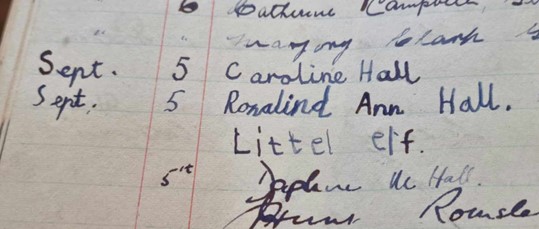
In the Innerpeffray visitors’ book of September 1965, there are a series of entries by the Hall family from Dundee. After Caroline and Rosalind (in what look like children’s handwriting), and before Daphne M., appears ‘Littel elf’. The question arose – who or what was this ‘Littel elf’? A small child would be my first guess, although it could also be an entry written on behalf of a family pet or child’s toy.
Alan McNee discusses some equally fantastical fictitious names in his 2020 article on visitors’ books, including the following two entries from the nineteenth-century Athole Arms Hotel visitors’ book in Blair Atholl: “Mr & Mrs Bogie Man & Woman & son” and “Podgy Wodgy, Ayry Fairy & Hoppety Poppety”.[i] Like McNee’s examples, the signature of ‘Littel Elf’ demonstrates the interesting relationship between visitors and visitors’ books. McNee goes on to write that the “visitors’ book was one of the very few places where an ordinary tourist, lacking the cultural capital to be published in print, could share her or his thoughts”.[ii]
Visitors’ books are not legal documents, where visitors are required by law to include their full and accurate details. By entering the name ‘Littel elf’ in the Innerpeffray visitors’ book, it has become part of a public record and part of our history. Whether a child’s toy or playful nickname, that moment of joy has been recorded in writing and will be remembered. It also got me thinking about other signatures in the visitors’ books which feature shortened or alternative names.

Turning to the twentieth century, an entry in the Innerpeffray visitors’ books from 30th September 1926 reads: ‘Bing Crosby – America’. While we have no further evidence to prove that Bing Crosby did indeed visit the library, there is also no reason to disbelieve this entry. In 1926, at the very start of his career, ‘Bing Crosby’ was not such a well-known name that there would have been any reason for someone to write a false entry. Harry Lillis “Bing” Crosby Jr. (1903-1977) was an American singer, actor, entertainer and businessman, perhaps most famous for his version of the song ‘White Christmas’ which appeared in the films Holiday Inn (1942) and White Christmas (1954).
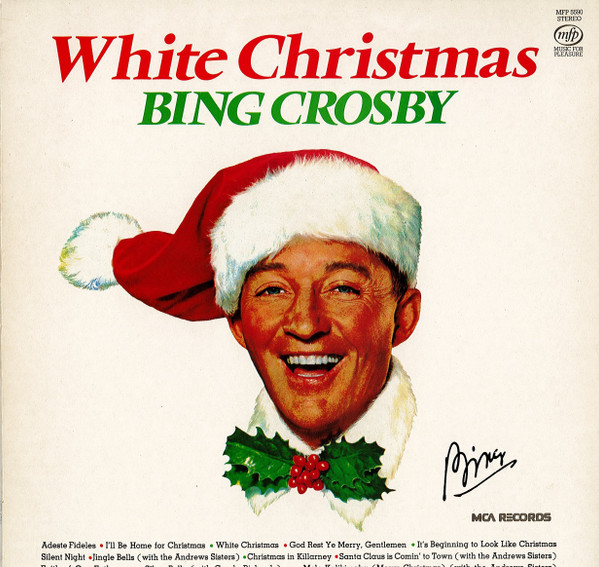
A keen golfer whose “passion for golf nearly equaled his love of performing”, it seems likely that Crosby was visiting and staying at the nearby Gleneagles Hotel, which had opened with much fanfare two years prior.[iii]
Reports vary on how Crosby received his iconic nickname – some say he received it as a joke from a teacher, others from his penchant for playing cops and robbers, and the most widely shared story is that it comes from a comic strip.
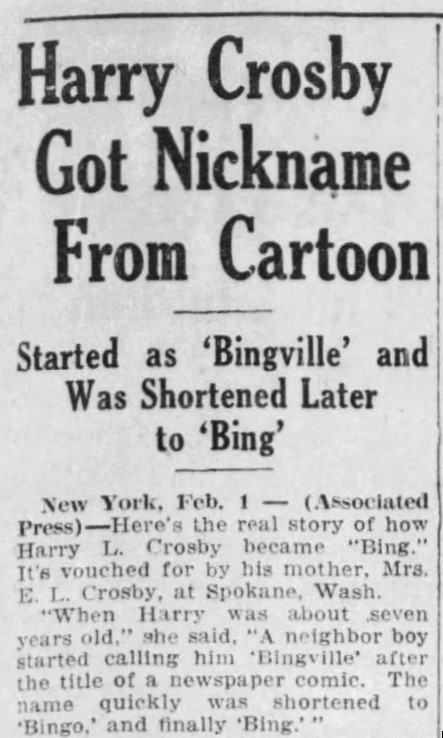
In 1932, the New York ‘Binghamton Press’ confirmed the latter, quoting Crosby’s mother, Mrs. E. L. Crosby: “When Harry was about seven years old, [a] neighbor boy started calling him ‘Bingville’ after the title of a newspaper comic. The name quickly was shortened to ‘Bingo,’ and finally ‘Bing.’”[iv] Published from c.1901 to 1934, Newton Newkirk’s column and comic ‘The Bingville Bugle’ detailed the hilarious exploits of the fictional town of Bingville.
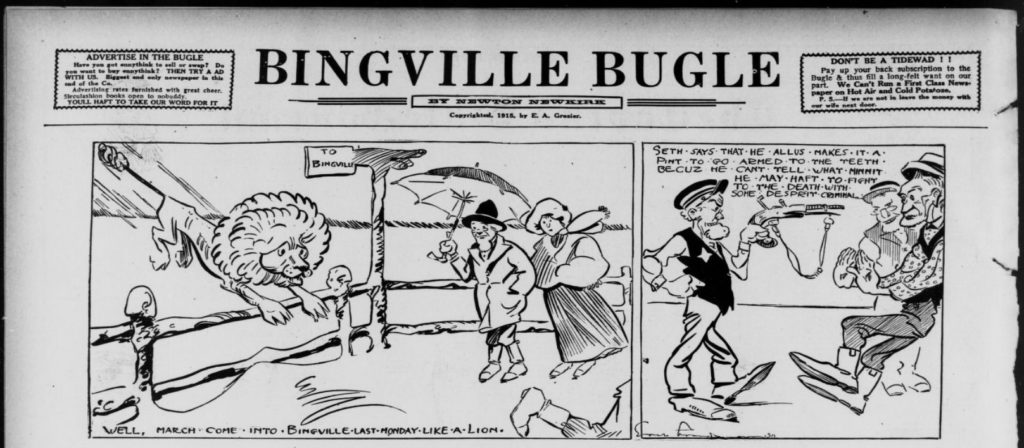
in Library of Congress (ed). Chronicling America: Historic American Newspapers.
By the age of 23, when Crosby visited Innerpeffray Library, he was more ‘Bing’ than he ever had been ‘Harry’.
Another notable use of a nickname in the visitors’ books is that of Lady Isabel Galloway Emslie Hutton (1887-1960), who signed her name in 1907 as ‘Bell G. Emslie’.

One of the innovators featured in Innerpeffray’s 2022 exhibition, Emslie Hutton was a trailblazing doctor who worked with the Scottish Women’s Hospitals in France, Greece and Serbia during the First World War. In 1920, she worked with Lady Muriel Paget’s Child Welfare Scheme to house almost 140,000 Crimean refugees and orphaned children, and she is one of the only women (alongside Dr. Elsie Inglis) to have been awarded the Serbian Order of the White Eagle medal, the highest military honour bestowed by Serbia.
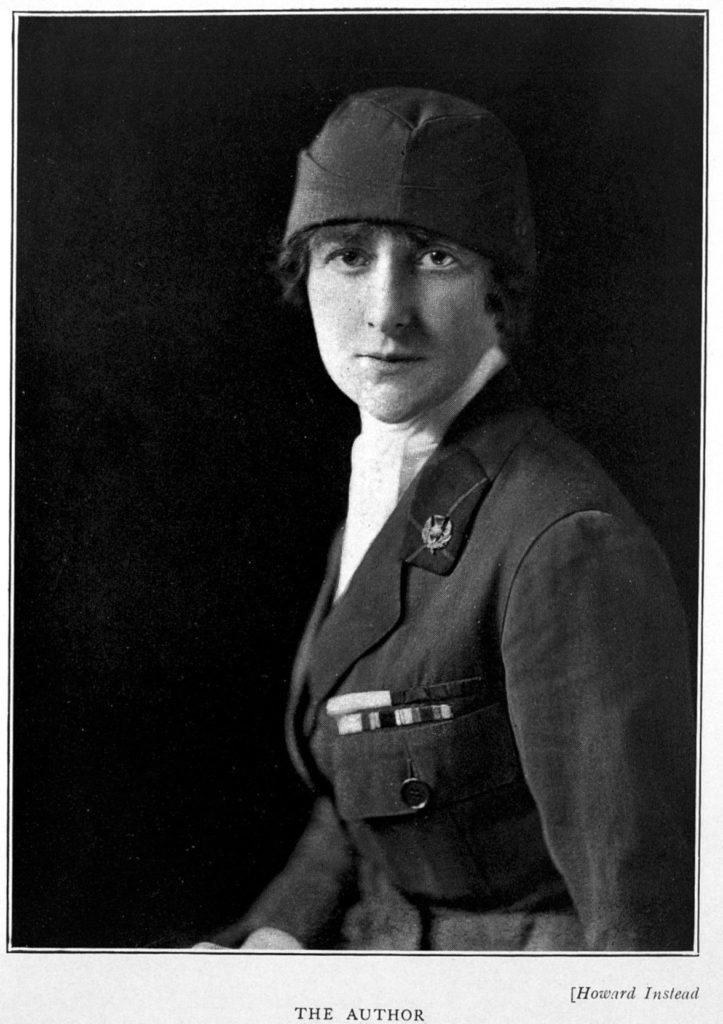
Visiting Innerpeffray at only 19 and before her illustrious career took off, Emslie Hutton signed her name in the visitors’ books as ‘Bell’ – perhaps using a family nickname since she was travelling with her parents. Funnily enough, in this instance, the use of a nickname almost prevented me from finding out more about her. What first brought her entry to my attention was her father’s signature, where James Emslie detailed that he was the Sub. Keeper of the Privy Seal in Scotland. Only after researching James Emslie did I find the link to his daughter.
The Innerpeffray visitors’ books record the names of thousands of visitors to the library from 1857. The first volume alone contains approximately 9,855 signatures – with a vast array of different naming practices. Whether nicknames, pet names or fond family jokes, the visitors’ books record them all.
Now, ‘Little Elf’ can join the ‘Innerpeffairies’ (inspired by a misspelling of ‘Innerpeffray’ in an 1868 visitors’ book entry) as an unofficial library mascot!

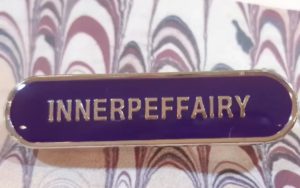
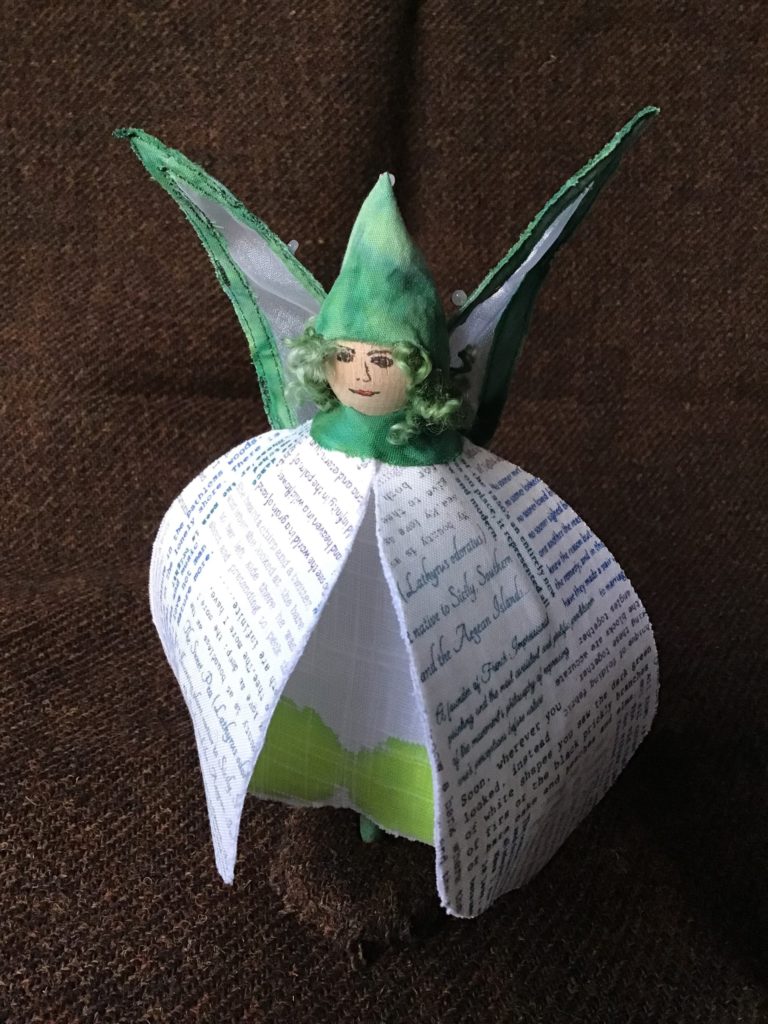
Isla Macfarlane, PhD Candidate
[i] Alan McNee, ‘‘Arry and “Arriet ‘out on a Spree’: Trippers, Tourists and Travellers Writing in Late-Victorian Visitors” Books’, Studies in Travel Writing, 24.2 (2020), 142–56 (p. 149) <https://doi.org/10.1080/13645145.2020.1847836>.
[ii] McNee, p. 150.
[iii] Richard West and Ted Thackrey Jr., ‘From the Archives: Bing Crosby Dies at 73 on Golf Course’, Los Angeles Times, 1977 <https://www.latimes.com/local/obituaries/la-me-bing-crosby-19771015-story.html>.
[iv] ‘Harry Crosby Got Nickname From Cartoon’, The Binghamton Press (Binghamton, New York, 1 February 1932), Monday Evening edition, p. 17.
